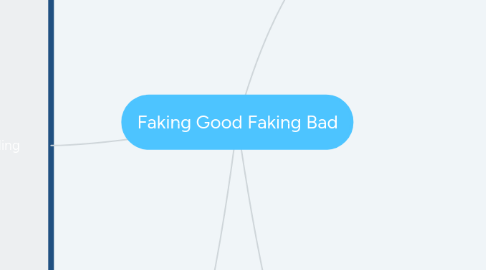
1. Careless Responding
1.1. More extreme type: Random responding
1.1.1. Unsystematic way, without reading or paying attention to item content
1.2. No motivation due to external incentives rather than fatigue etc.
1.3. Inconsistent item endorsement on self-report measures
1.3.1. Four general approaches to identify
1.3.1.1. Response times to identify unusually fast respondents
1.3.1.2. Consistency between logically related items
1.3.1.3. Identifying participants who provide improbable or factually incorrect responses
1.3.1.4. Evaluating self-report measures of effort or carefulness
1.4. Inflated prevalence estimates for rare groups
1.5. Inflated mean scores on clinical measures
1.6. Misclassifications
1.7. Related to personality traits
1.7.1. Conscientiousness
1.7.2. Agreeableness
1.7.3. Extraversion
1.7.4. Emotional stability
2. How to deal with it?
2.1. Consider alternative hypothesis
2.2. Use of multi-method approach!
2.3. Consider PPP and NPP
2.4. Don't rely on clinical judmgenet
3. Faking bad (many symptoms)
3.1. Malingering
3.1.1. Fabrication or exaggeration of symptoms
3.1.1.1. Not the same as inadequate effort!
3.1.2. Deliberate feigning
3.1.3. Conscious desire for external incentive
3.1.4. Slick criteria
3.1.4.1. External motive to feign symptoms
3.1.4.2. Failure on two independent PVTs
3.1.4.3. Evidence inconsistency between self-report symptoms and observed behavior
3.1.5. Symptom Validity Tests (overreporting)
3.1.5.1. e.g. SRSI; SIMS; BSI-18
3.1.6. Performance validity tests (underreporting)
3.1.6.1. e.g. TOMM, Forced-Choice Test e.g. Coin-in-hand test, MENT, ASTM
3.1.7. Interview
3.1.7.1. e.g. CBCA, LIWC
3.2. Factitious Disorder
3.2.1. Fabrication or exaggeration of symptoms
3.2.2. Deliberate feigning
3.2.3. Unconscious need to assume sick role
3.2.4. DSM-V criteria
3.2.5. Symptom Disposition Interview (SDI)
3.2.6. Extensive review of medical history/notes, collection of collateral information
3.3. Somatic Symptom Disorder
3.3.1. Non-deliberate feigning
3.3.2. Physical symptoms
3.3.3. Unconsciously determined
3.3.4. Extensive review of medical records
4. Faking Good (few symptoms)
4.1. Social Desirability
4.1.1. Tendency to give overly positive self-descriptions
4.1.1.1. Egoistic bias
4.1.1.1.1. Social status
4.1.1.1.2. Intellectual status
4.1.1.2. Moralistic bias
4.1.1.2.1. ‘Saint-like’ attributes
4.1.1.2.2. Deny socially-deviant impulses
4.1.2. Marlowe–Crowne Social Desirability Scale (MC–SDS)
4.2. Supernormality
4.2.1. Tendency to deny common psychological symptoms in order to make a healthy impression
4.2.2. Supernormality Scale (SS-R)
4.3. Overclaiming
4.3.1. Tendency to present oneself as more knowledgable and intelligent than is true
4.3.2. Over-Claiming Questionnaire (OCQ)
4.4. Overconfidence
4.4.1. A positive deviation between estimated and actual performance
